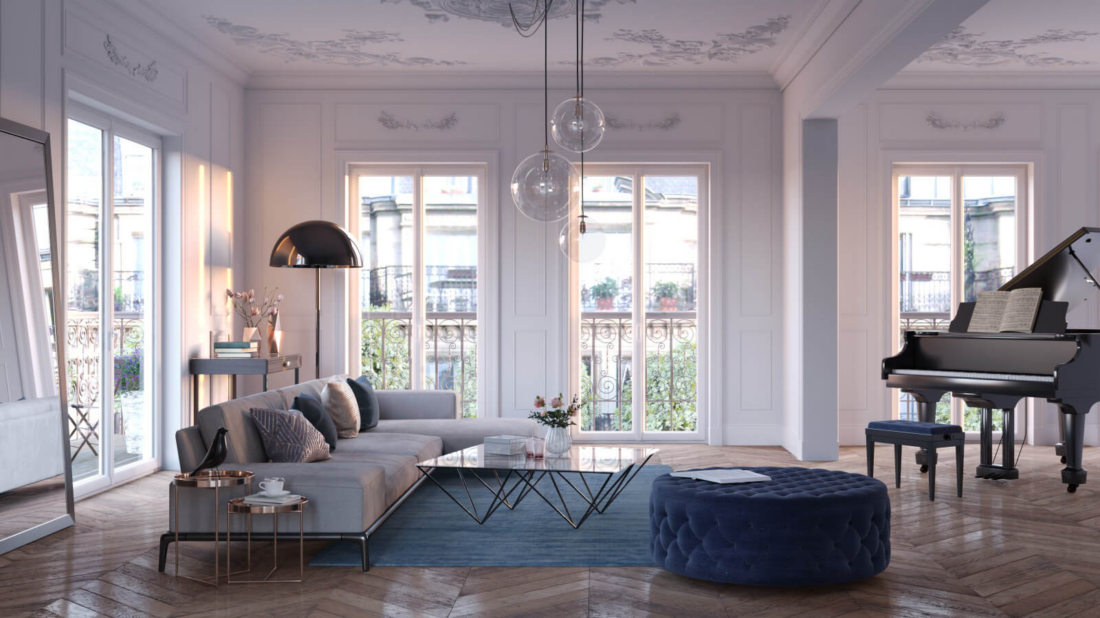Save Energy with New UPVC Windows

Environmental protection has been a hot topic for years. Environmental activists continually come up with new dire forecasts, while scientists, though more moderate, consistently warn about the potential dramatic consequences of climate change.
For most people today, it’s a fact that saving energy is one of the most critical factors in the fight to save the Earth.
The real question is, how can we best save energy? In our Western industrialized nations, energy is a primary driving force in our lives. We wake up in the morning, turn on the lights, use our cell phones, start our tablets, laptops, or PCs, and spend large portions of the day in front of a screen.
Indeed, energy consumption in Western Europe and North America is among the highest globally. However, there are areas where we can relatively easily save energy. This applies to both electricity and heating energy. Here on living-and-building.com, we show you how simple modernization measures can significantly reduce heating energy consumption in your home. Considering the rising heating energy prices, this is undoubtedly good news for many homeowners.
Heating Energy – A Area with a Lot of Savings Potential
In Germany, private households are one of the major energy consumption factors. Private households are not far behind the industry in energy use, contrary to popular belief. Those who think we’ve significantly reduced household energy consumption in recent years with more energy-efficient appliances are mistaken.
As reported by the Federal Environment Agency in 2020, the energy consumption of private households in 2018 was roughly the same as in 1990, long before much of the population began seriously considering environmental protection and energy or carbon balance. According to the Federal Environment Agency, more than two-thirds of energy consumption in German households is due to heating energy.
Thus, heating energy is one of the largest energy guzzlers in Germany. Regardless of whether you heat with gas, oil, wood, or modern heating systems like a heat pump – any excess heating energy used is energy that could be saved.
How Modern Windows Can Save Energy
The question is, can some of this heating energy be saved? The answer in many cases is a resounding “Yes”. For this, you wouldn’t even have to sit in a colder apartment or house. The conditions simply need to change.
The biggest weak point in terms of thermal and energy loss in most houses is the windows. Statistically, the facade of a typical house in Germany consists of about a third of window fronts. To continue with the statistics – around 40% of the consumed heating energy escapes through these windows without effectively warming the interior of your home.
This has various adverse effects on the environment, from the general warming of air in cities to increased energy consumption that wouldn’t be necessary. So, if you want to do something good for your wallet and the environment and still have old windows in your house, consider upgrading to high-quality UPVC windows. The cost of such renovations can pay off within a few years.
Houses built before 1978 often still have old windows with single glazing. In comparison, these lose about 50 times as much heat as modern windows. For windows installed between 1979 and 1995, the heat loss is still 3 to 4 times higher than the most modern generation.
What to Look for When Buying New Windows
If you’re planning a renovation of an old building and are considering new windows, there are some things you should definitely keep in mind. First and foremost is ventilation. Older windows often have what can be described as unintentional constant ventilation. This makes it difficult to keep rooms warm in winter and also results in a significant loss of heating energy.
On the other hand, it prevents mold and humidity in the rooms. Switching to modern, well-insulated windows cannot be done without a complete change in ventilation behavior. Otherwise, you risk quickly seeing moisture on the walls and eventually mold in rooms with new windows.
U-Values Are Crucial
If you want to know how well your new window is insulated, the U-values of the windows are essential. There are different values:
- Uw-Value – indicates the heat transfer coefficient for the entire window and is generally the most important U-value.
- Uf-Value – indicates the insulation of the frame.
- Ug-Value – indicates the heat transfer coefficient for the window glass.
This value is measured in watts per square meter and Kelvin. When purchasing a new window, the Uw-Value is crucial. Modern windows should have a value no higher than 0.9. For comparison, windows from before 1978 had an average Uw-Value of nearly 45.
Why UPVC Windows Have an Edge Over Wooden Windows
In terms of thermal insulation, modern wooden windows and UPVC windows are not that different – there are no noticeable differences anymore. Plus, wooden windows bring a natural material into the house, which can regulate indoor humidity and create a cozy atmosphere.
The significant disadvantage of wooden windows, however, is their maintenance. The wood gradually fades and needs thorough care at least every two to three years. With UPVC windows, you have it much easier while maintaining the same air and heat quality in the room.
Moreover, UPVC windows are much more affordable. Since most UPVC windows Oknoplast now consist of 100% recyclable materials, and the carbon footprint of modern UPVC windows is no longer as negative, these counterarguments don’t hold.
Conclusion – How You Can Save a Lot of Energy with Modern UPVC Windows
Modern triple-glazed UPVC windows are a relatively inexpensive yet high-quality option for modernizing or renovating your property. Switching to modern window fronts will undoubtedly give you a whole new room climate, depending on the age of your previous windows, and contribute significantly to reducing overall energy consumption.
